In August and September especially, we receive a lot of questions about larvae tick encounters. Late summer is when you’re most likely to encounter an egg-batch’s worth of larval stage deer (blacklegged) or Lone Star (seed) ticks. These six-legged larvae hatch from egg masses that can contain 3,000 or more eggs that all hatch at about the same time. That’s why people more frequently encounter a tick swarm instead of a single larval tick. Some people call it a tick nest but it’s really just all of the eggs from one female hatching all in the same place. The good news about larval deer and Lone Star ticks is that they (mostly) hatch from eggs as germ-free ticks. We’ll get to the mostly part in a minute.
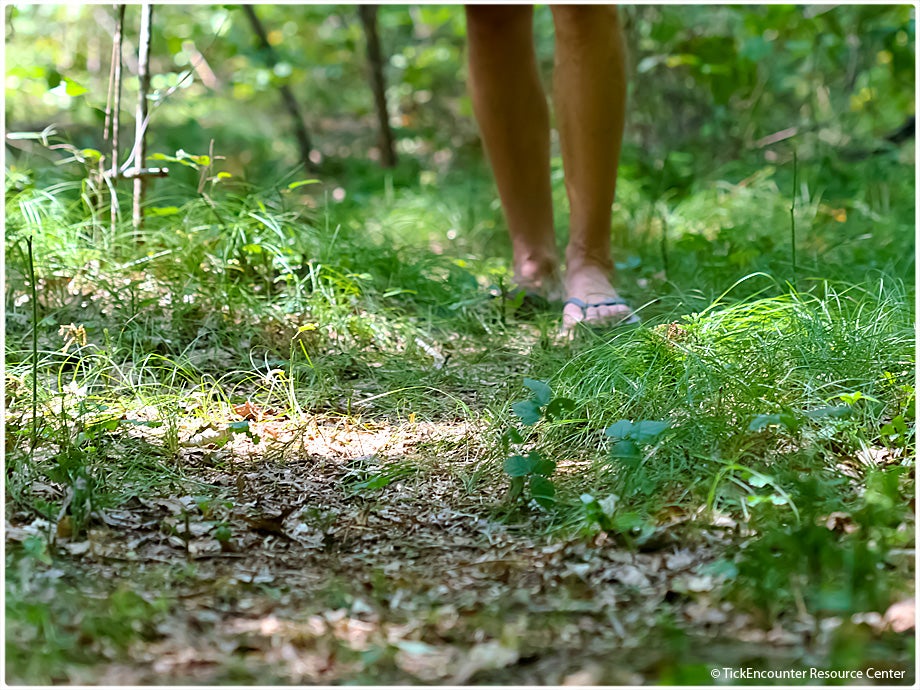
click the arrows to view this picture gallery 
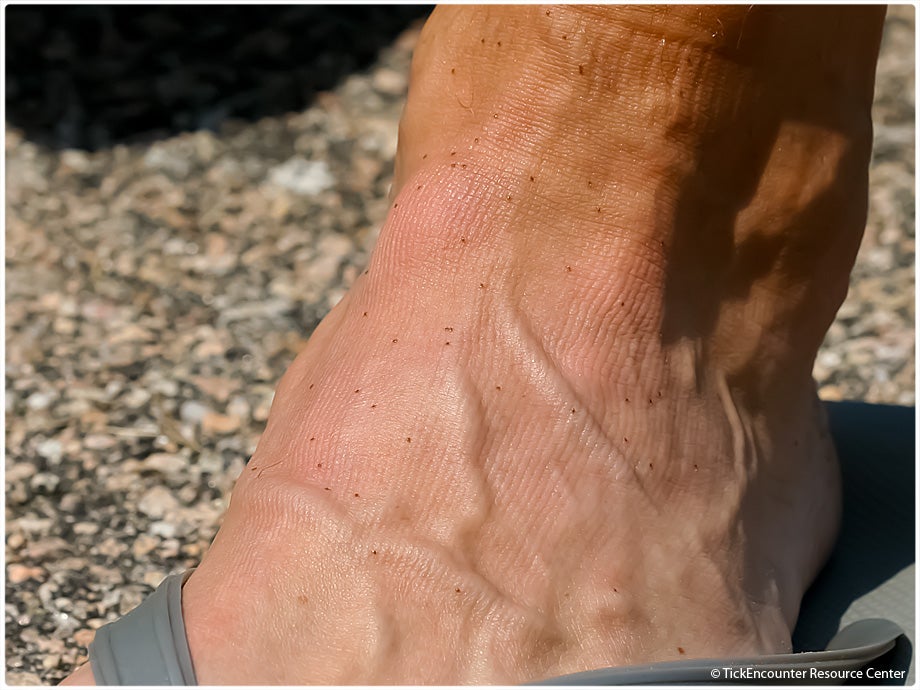
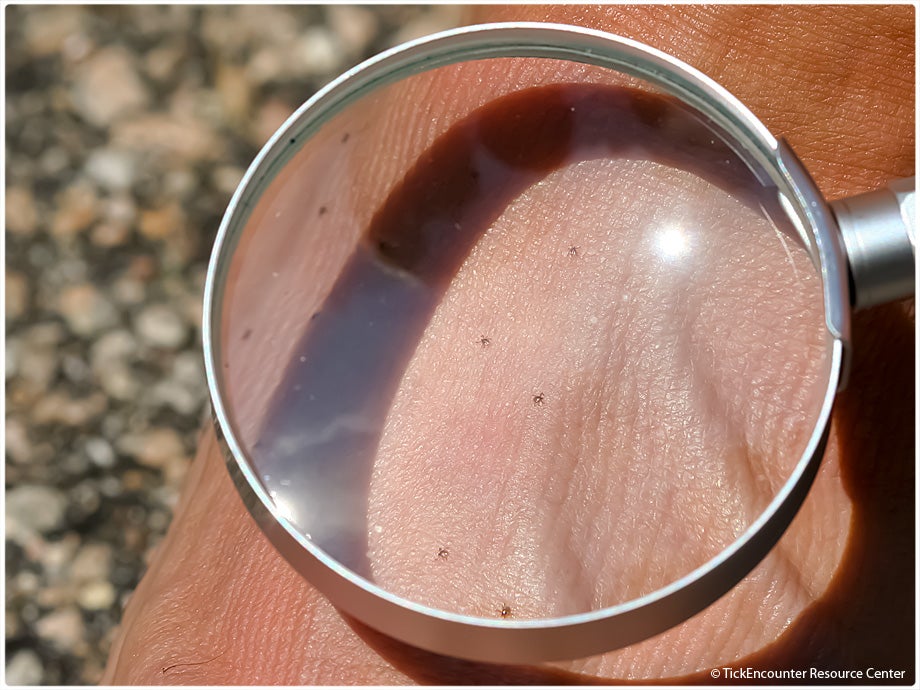
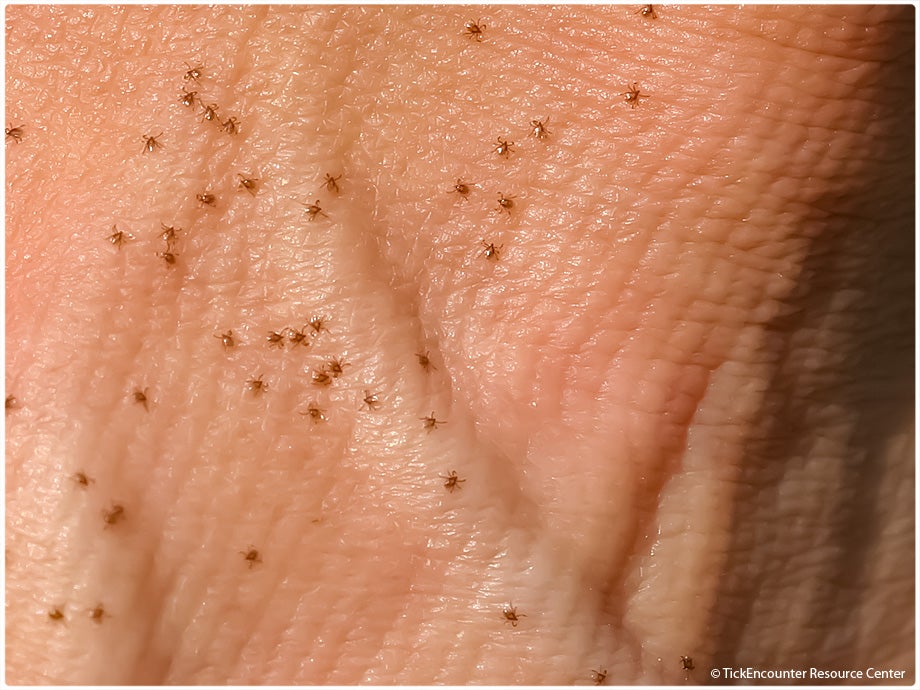
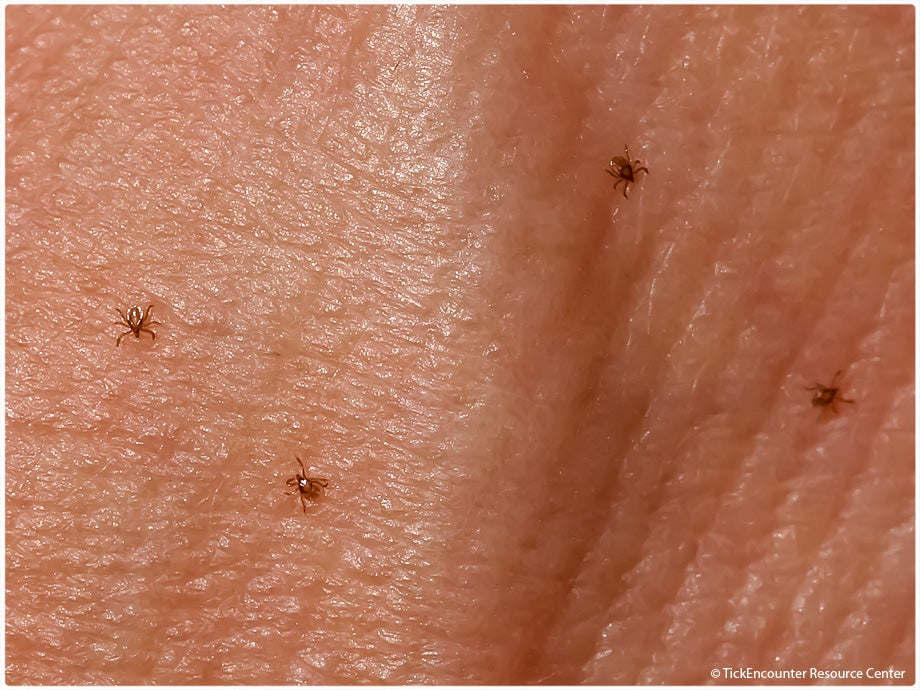
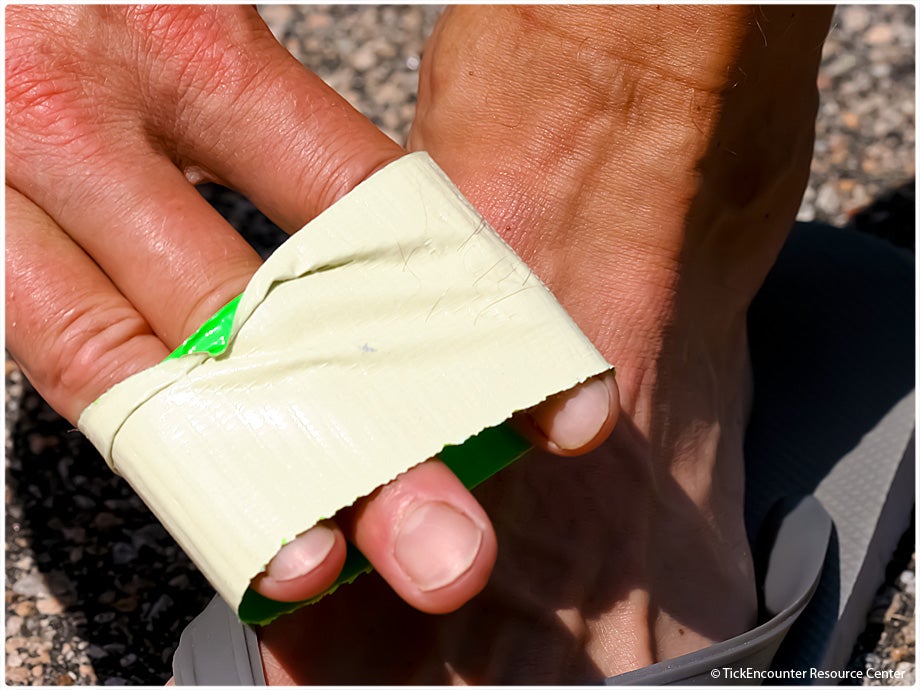
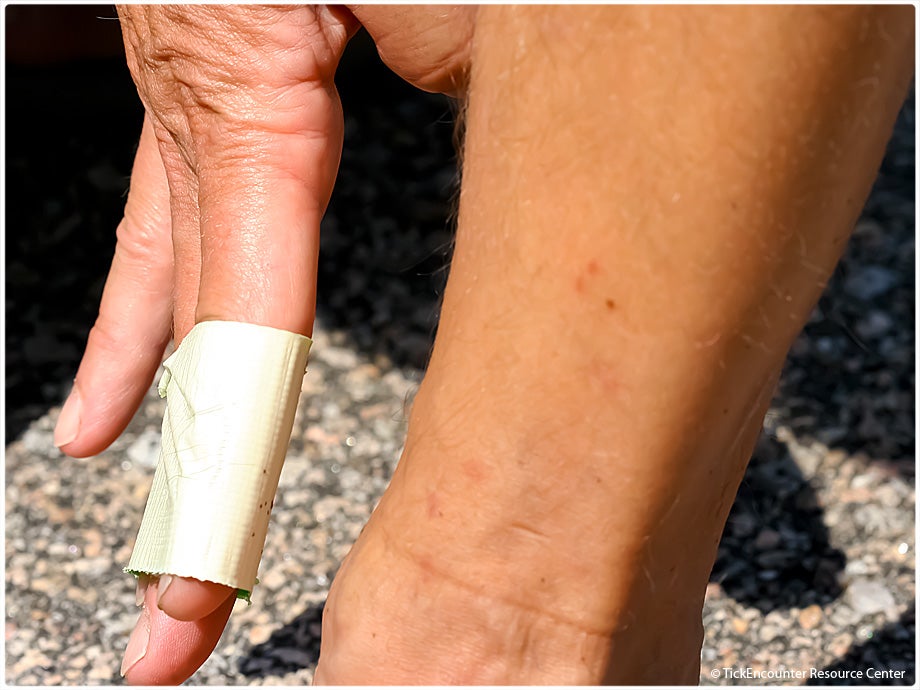
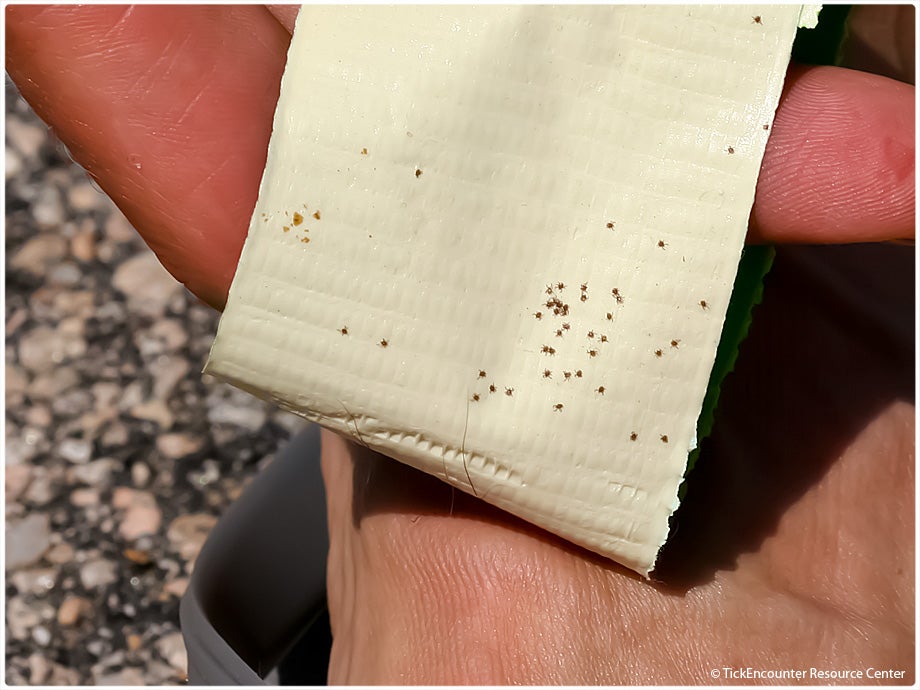
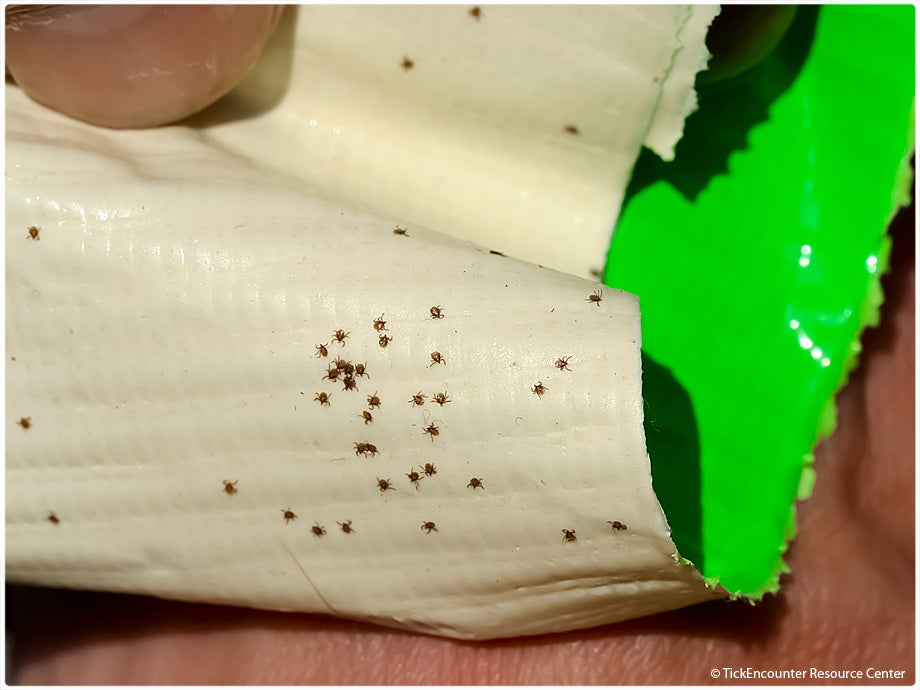
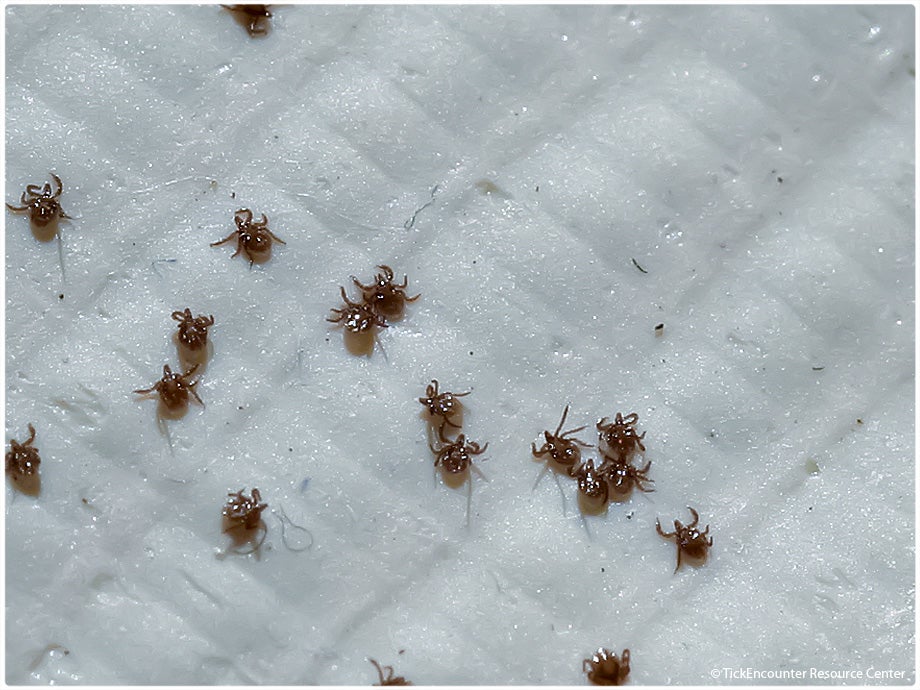
Of the 1,001 things duct tape is good for, it is a very effective way to de-tick yourself when larvae ticks climb on. With ticks, it works best to get them before they dig in and start to feed. Lint rollers also work but duct tape is stickier (and you can probably find 5 or 10 other things to use your duct tape for).Our TickSmart Tip for August and September is to always have sticky duct tape ready just in case of a tick swarm. Duck Brand tape even comes in an appropriate lime (Lyme) green color!
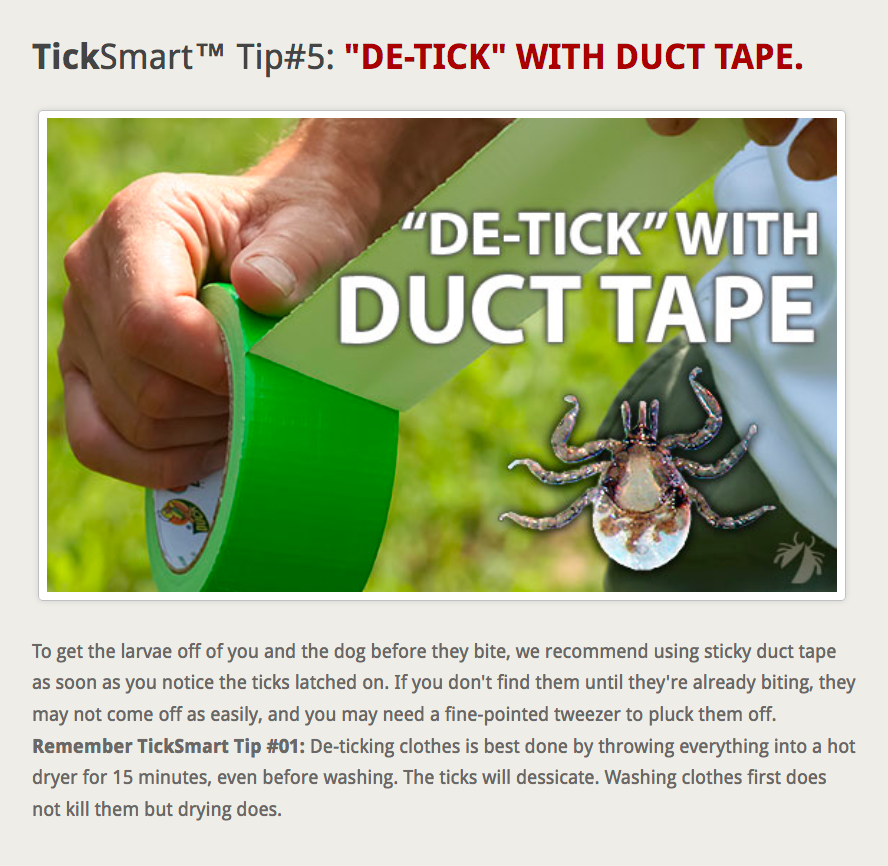
Now, back to that larvae mostly hatch from eggs as germ-free ticks comment above. There is at least one tick germ known to pass from infected mother tick to her offspring through the egg stage. The germ is called hard tick relapsing fever Borrelia; it’s an non-Lyme disease causing Borrelia, which can make it confusing. But that germ can also make people sick. It’s scientific name is Borrelia miyamotoi and it’s more closely related to the soft tick relapsing fever Borrelia hermsii. We have another blog all about Borrelia miyamotoi…click here to read.
Are these eggs infected?
